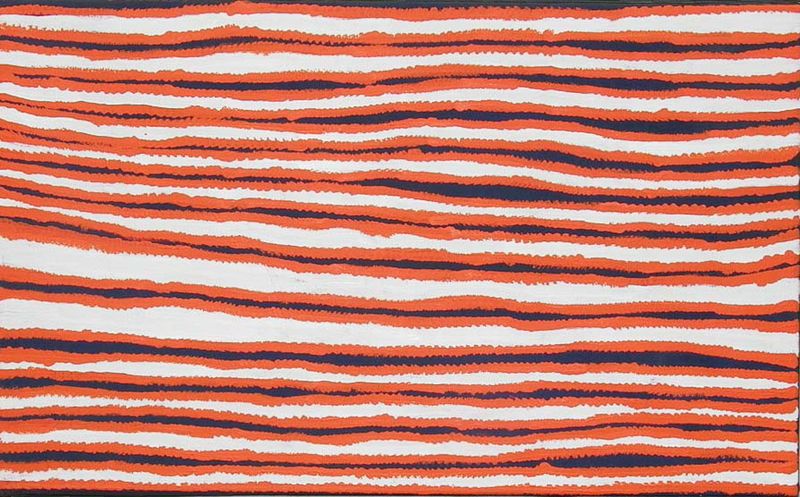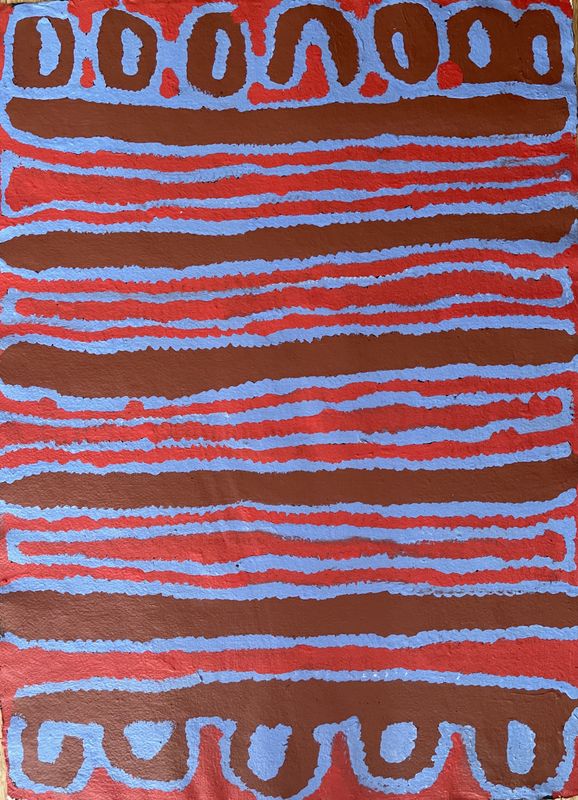Alice Nampitjinpa Dixon
Alice Nampitjinpa Dixon: Celebrated Artist and Cultural Custodian
Alice Nampitjinpa Dixon, born in 1943 near Talaalpi, a swamp east of Walungurru on the Western Australian border, was a highly respected artist and cultural custodian. Before dedicating herself to painting, Alice spent many years at Kintore School, teaching young girls traditional dancing and the desert people's customs.
Early Life and Cultural Influence
- Born: 1943 near Talaalpi, Western Australian border
- Father: Uta Uta Tjangala, one of the original Papunya Tula painters
- Cultural Role: Teacher of traditional dancing and desert customs at Kintore School
Alice's journey into painting began with her involvement in the "Minyama Tjukurrpa" project, a collaborative canvas initiative between the Kintore and Haasts Bluff communities. The project, named after the Pintupi term for women's law or story, allowed women to express and document their Dreaming stories. This initiative culminated in the 1995 exhibition at the Tandanya National Aboriginal Cultural Institute.
Artistic Journey and Achievements
- Art Movement: Minyama Tjukurrpa, Kintore Haasts Bluff collaborative canvas project
- Solo Exhibition:"Through Alice’s Eyes" at Onshore Gallery, Geelong, Victoria, 2004
- Group Exhibition:"Divas of the Desert" at Gallery Gondwana, Alice Springs, 2004
Alice was inspired by her rich cultural heritage and her stories and lore, often portraying her Tjukurrpa (Dreaming stories) in vibrant colors like orange and yellow, mirroring ceremonial body painting ochres. Her primary story was that of the porcupine, or Tjilkamata, depicting the animal's movements and interactions with women hunting in the desert.
Cultural and Artistic Contributions
- Main Tjukurrpa: Porcupine (Tjilkamata), depicted in bright colors reflecting ceremonial ochres
- Cultural Activities: Active "dancing woman," participating in annual ceremonies and "Women's Law" meetings
- Hunting Companion: Eunice Jack Napanangka
Alice also contributed to traditional crafts, producing hand-spindled hairstring for ceremonies and ininti necklaces and mats. She frequently ventured into the bush to collect ininti seeds, meticulously piercing them with hot wire to create beads for her crafts.
Legacy and Passing
- Father's Tjukurrpa: Pungkalungka at Takpalangu, involving dangerous creatures living in caves
- Father’s Country: Ngurrapalangu, where her Tjukurrpa was inherited
- Craftsmanship: Hand-spindled hairstring, ininti necklaces, and mats
Alice Nampitjinpa Dixon passed away in December 2020, leaving behind a legacy of cultural preservation and artistic brilliance. Her works continue to be celebrated, representing a profound connection to her heritage and the traditions of her people. She is remembered as a senior artist at the Ikuntji Arts Centre and a key figure in the preservation of Aboriginal culture and art.


